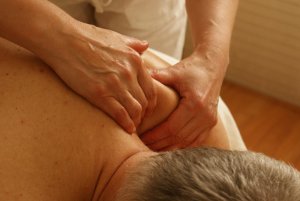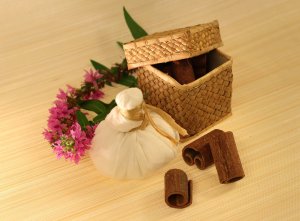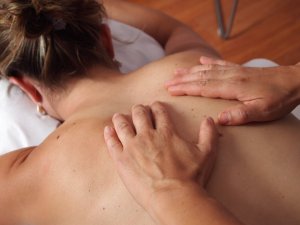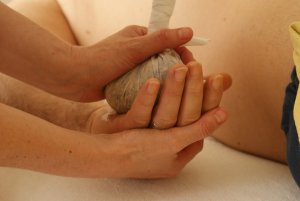What is Ayurvedic Massage?
Ayurvedic massage is a key part of Ayurvedic therapy. Just as a machine needs to be oiled, the body loves to have its largest organ, the skin, soothed, which is why oils are commonly used in Ayurvedic massage.
Whether the Ayurvedic massage forms part of a more comprehensive Ayurveda programme or is merely undertaken for the sheer pleasure of a deeply relaxing, indulgent body massage; Ayurvedic massage is one of Ancient India’s best-kept secrets.
Over 5,000 years of empirical research has refined Ayurvedic massage into a sublime art, and yet it is still unheard of by many. However, combining skilled knowledge of the body with knowledge of oils, music, and bodywork techniques has resulted in a profound art for balancing the body and mind through the medium of oil massage.
Ayurvedic Massage: Therapeutic Benefits
Oil massage is consistently used throughout Ayurvedic massage treatments. Its calm approach means that recipients are not only induced into a relaxed state during the massage, they also often report an improvement in their sleep patterns and general sense of wellbeing. In an ideal world, Ayurvedic massage would be carried out daily to help keep at bay the effects that everyday stresses and strains can have on our minds and bodies.
Travelling through the sea of life our bodies gather barnacles of conditioning through diverse experiences. These ‘barnacles’ are sub-conscious areas of tension that house our history of emotional baggage, such as defences and vulnerabilities. Weighed down with emotional toxicity, our body armours itself against attacks from past ‘ghosts’. A sensitive Ayurvedic massage therapist is able to read an individual’s body map of aches, pains, lumps and bumps, fully aware that every touch evokes certain emotions and gently facilitates the ‘letting-go’ of unresolved wounds.
During an Ayurvedic massage a subtle transfer of electromagnetic energy takes place between the therapist and the client so it is important to trust and feel ‘good vibes’ with your chosen therapist. One must feel receptive and safe in order to allow the energy of the therapist. In turn, a wave of unconditional love and compassion flows through the therapist as they respect the faith you have placed in them, an honour not taken lightly. Perhaps that’s why the Ayurvedic word for oil is sneha; a term also synonymous with love, kindness and tenderness; all the feelings that should engulf you during an Ayurvedic body massage. If love is the panacea, then an Ayurvedic oil massage is a great way to get a good dose of unconditional love.
The Ayurvedic Massage Experience
Most forms of Ayurvedic massage therapy for the body begins with a preliminary oil massage and may then proceed to a more specialised technique…
Therapists as Sculptors
The Ayurvedic massage strokes vary from deep to superficial and follow the flow of energy channels, nerve pathways and hair growth. There are three types of movements – active (strong pressure), passive (delicate stroking) and persuasive (pinching or kneading the small muscles with the thumb and forefinger).
Before the Ayurvedic massage, the therapist focuses their energy with a brief balancing meditation and may recite a prayer. Like a hypnotic dance, the therapist synchronises their breathing with the recipient in order to maintain a deep interconnection. Like a sculptor flowing with the body’s mould, they create a very relaxing yet enlivening mood. The entire body (except the genital region) is tended to in order to bring about a sense of whole-body integration and alignment.
Marmas and Chakras
Ayurvedic body massage is performed with an acute awareness of the marmas and chakras. In Ayurveda, marmas are vital points similar to acupressure points. Manipulated correctly, they revitalise the entire body. Though marmas are innumerable, there are 107 major ones located at the junctions where flesh, veins, arteries, tendons, bones and joints meet, as well as being the secondary seats of subtle energy (Prana or Qi). It is at these areas that pain and weaknesses tend to congregate. Marmas are also the points where the elemental life forces of ether, air, fire, water and earth converge and therefore where the body’s organising intelligence is most concentrated.
The seven great marmas in Ayurvedic massage are the same as the main chakras. These seven chakras are whirling vortexes of energy located over the main endocrine glands – the gonads and ovaries, pancreas, adrenals, thymus, thyroid, pituitary and pineal. According to Ayurveda, each chakra nourishes particular organs and controls various psycho-physiological aspects of our being. When they are blocked, physical disease ensues. Ayurvedic oil massage opens and cleanses these energy channels so the current can flow freely and our latent vitality is released.
Supportive input to the senses is emphasised during Ayurvedic massage therapy as our senses are the gateways to our biological and mental processes. The sense of touch is already being employed but how can the sense of smell, sight and hearing be recruited into the healing process?
Lend Me Your Ears
“Music gives soul to the universe, wings to the mind, flight to the imagination, charm to sadness, gaiety and life to everything” – Plato
During an Ayurvedic massage, music is a very uplifting and meditative addition to the experience. Transcending the intellect, music touches our deepest spiritual essence which is why the Sanskrit term for note (swara) means expression of the soul. Transporting us to a realm of etheric vibrations, music activates the right side of the brain which nurtures creativity, intuition, receptivity, softness, stillness, silence, dreams, relaxation, imagination and regeneration. Sound is simply a vibration eliciting change in the forms it flows through, our atoms literally ‘dancing’ to the beat of the music.
For thousands of years Ayurvedic music therapists have utilised the Ragas (72 major melodies) in order to dispel imbalances. These melodies were developed through the recognition of cosmic vibrations emitting from natural forces. Reflecting a particular mood and physical reality, the listener’s biorhythms start to resonate with the musical vibration, creating a harmony. Some Ragas commonly used include Raga Bhairavi, Raga Hindol, Raga Pooriya, Raga Bhageswari and Raga Jaijaivanti.
Smell The Roses
 Aromatherapy helps coax our 10 million sense-detecting cells into an effortless state of relaxation. Smell is the only sense with a direct link to the limbic or emotional centre of the brain. During an Ayurvedic massage, therefore, this gives aromas the power to evoke vivid impressions, conjure up memories and trigger emotions.
Aromatherapy helps coax our 10 million sense-detecting cells into an effortless state of relaxation. Smell is the only sense with a direct link to the limbic or emotional centre of the brain. During an Ayurvedic massage, therefore, this gives aromas the power to evoke vivid impressions, conjure up memories and trigger emotions.
Upon waking, the ladies of India’s palaces would bathe in a pool filled with the petals of 1,000 roses. Their bodies and hair were then cleansed and beautified with jasmine, sandalwood and henna herbal oils. The blend of essential oils created an air of sensual delight that would intoxicate anyone entering the palace grounds.
Choosing The Right Aroma
Everyone has a particular neuro-association linked to certain scents. To one person, rose essential oil may conjure up happy feelings of their childhood garden, whilst another may be repulsed by its association with a tragic funeral service. It is therefore of utmost importance that the smell during a massage experience induces a positive state in the inhaler.
The essential oil should also counteract one’s elemental imbalances. Ayurvedic principles suggest, for example, that a hot, angry, restless person with skin inflammation would experience aggravation from cinnamon essential oil in a mustard seed oil base. Yet, this combination would be ideal for a cold, plump, lethargic person suffering from bronchitis. The former ‘hot’ person would experience relief from jasmine or sandalwood essential oil in a coconut oil base whereas the bronchitis sufferer could feel worse from this.
Mantras
The use of mantras is sometimes involved in massage therapy but these are usually chanted silently in the therapist’s mind. Mantras are concentrated, specific sound vibrations, which cleanse subtle impurities from the mind and energy channels. George Harrison described them as “a mystical energy encased in a sound structure, each mantra containing within its vibrations a unique power”. In Ayurvedic massage, mantras may be incorporated to invoke particular healing energies or to clear specific blockages from the chakras.
Dreams Are The Seedlings Of Reality
A very powerful partner to bodywork, visualisations trigger the right side of the brain’s capacity for renewal and change. Since the mind is exceptionally impressionable and receptive during massage therapy, due to the alpha brain wave state induced, it is the perfect time to clear out weed-negative beliefs and plant positive-seed beliefs with conscious intentions. Visualisations are a way of taking advantage of the old adage that anything we conceive and sincerely believe in, we can achieve. Far from just a fleeting new-age concept, the uses of affirmations and visualisations have been used in Ayurveda and Yoga for thousands of years under the guise of samkalpas.
All Good Things Must Come To An End
An Ayurvedic massage session sometimes ends with a body scrub using bean or grain flours known as ubtans. These facilitate exfoliation, promote oil removal and stimulate circulation, as well as produce a glowing complexion. A steam bath or chamber may also be offered to further warm the body and enhance the massage oil absorption.
An Ayurvedic Therapy Plan
Where Ayurvedic massage is to form part of a more comprehensive therapy plan, a qualified Ayurveda specialist will assess your body’s doshic balance before embarking on any massage therapy to ensure you receive the most suitable form of Ayurvedic massage for your needs. After investigating the state of your tissues, your body systems, previous conditions and mental disposition, the ideal type of Ayurvedic massage for your needs will be recommended and then tailored to suit. Specific strokes, oils, marmas and chakras, music, affirmations and guided visualisations are also formulated to enhance the therapeutic impact of your Ayurvedic massage.




